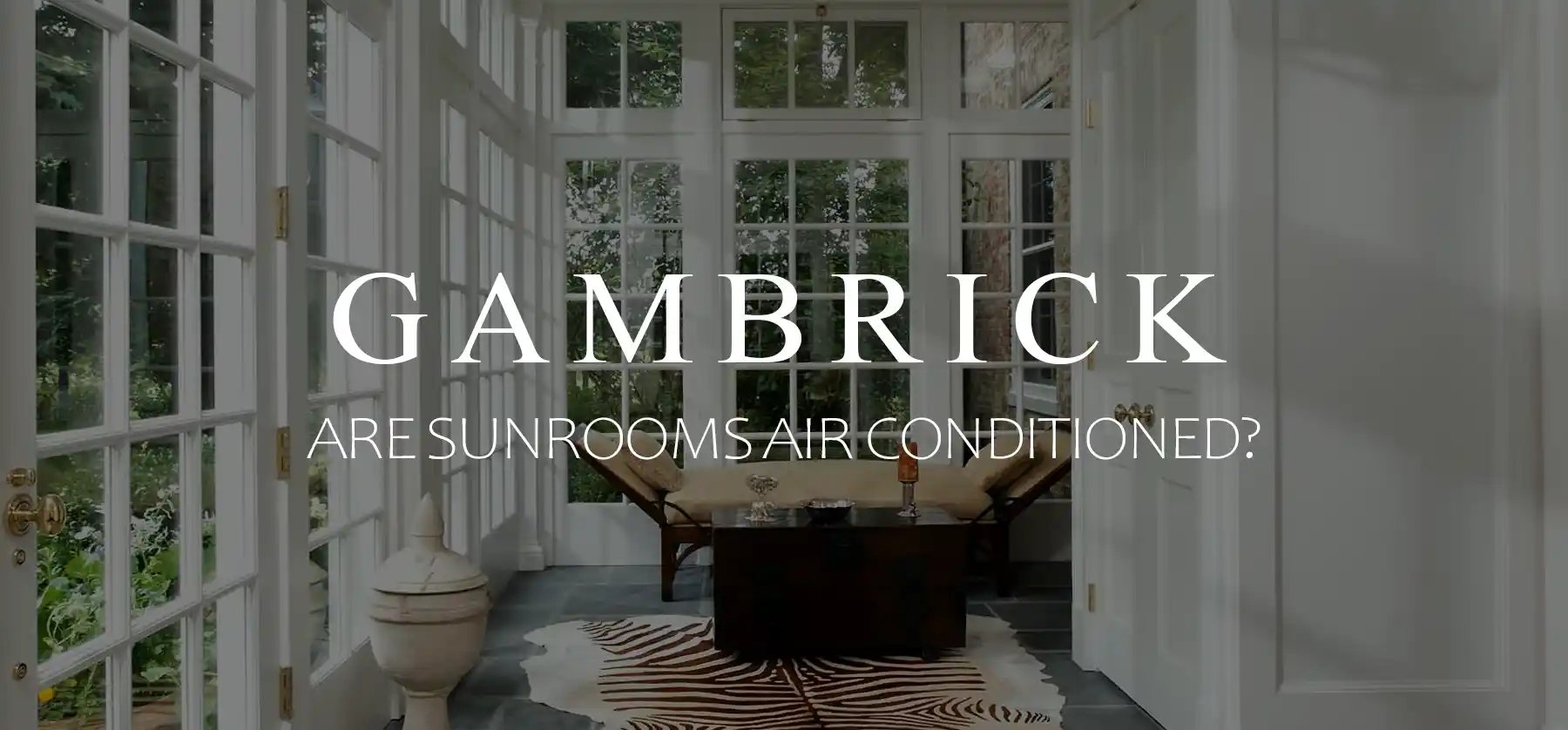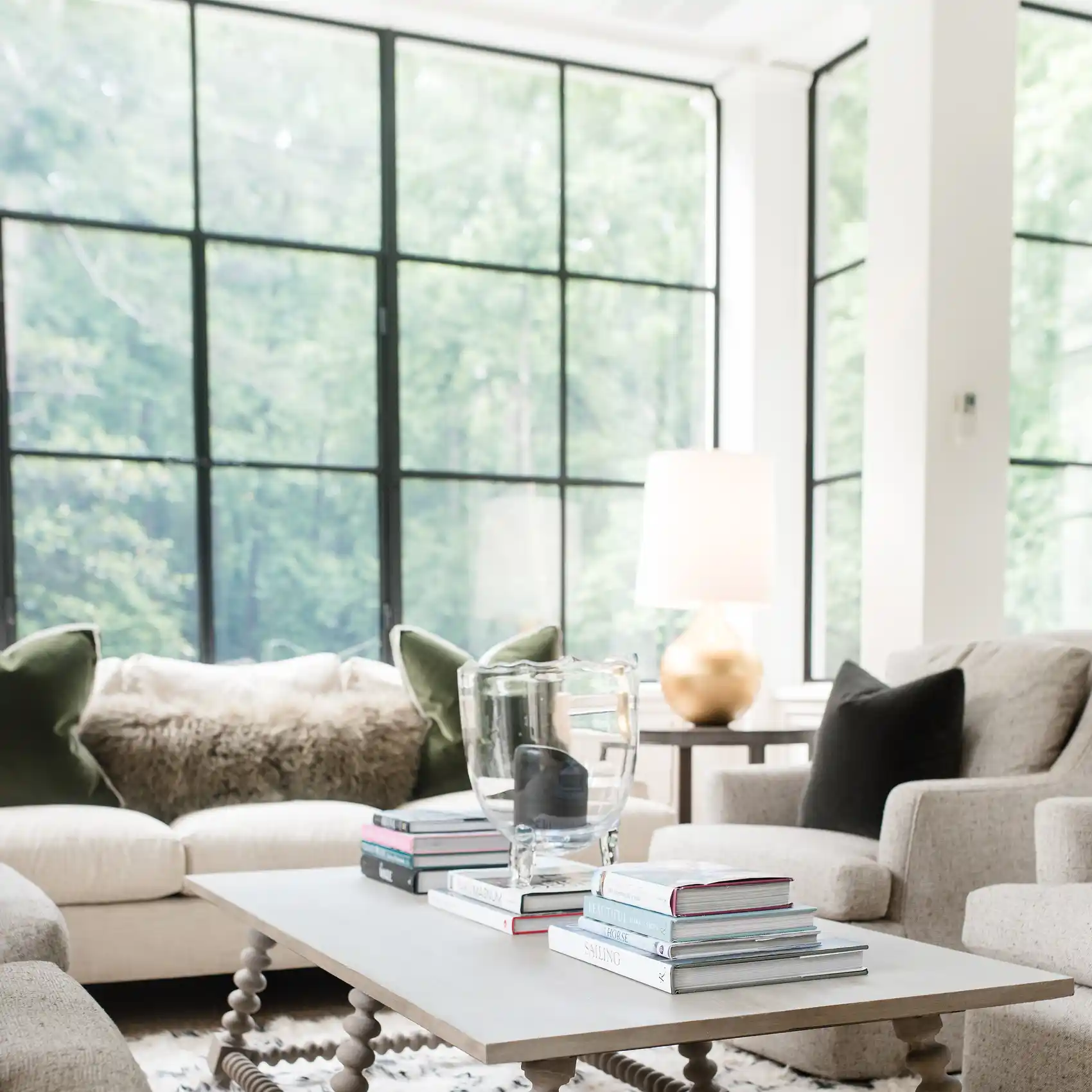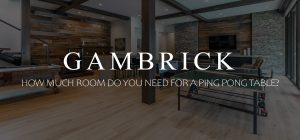
Are Sunrooms Air Conditioned?

By John Mazzuca | About | More Posts |
John Mazzuca is a custom home builder with over 25 years experience in the construction industry. John has designed, managed, and built hundreds of homes & construction projects.
Whether or not a sunroom is air-conditioned depends on the type of sunroom being built and how/when it’s intended to be used. Sunrooms come in a variety of designs, but break down into two basic groups, three-season and four-season rooms. In general, four-season sunrooms have air conditioning and three-season sunrooms don’t.
Four-season sunrooms are designed to be used in all four seasons so they’re heated and cooled, and well insulated. They’re built with better insulation, including energy-efficient windows, and often integrated with the home’s central HVAC system. This allows them to be heated in the winter and cooled in the summer, providing a comfortable living space regardless of the weather outside.
Three-season sunrooms are usually built without air conditioning. They’re intended for enjoyment during the milder temperatures of Spring, Summer, and Fall. They typically lack the insulation necessary for maintaining comfortable temperatures during extreme cold or heat, making air conditioning less efficient.
Insulating a sunroom is extremely important if it’s to be air-conditioned. Insulation ensures that the energy used to heat or cool the space isn’t wasted, leading to more efficient temperature control and lower utility bills.
Insulation also contributes to the overall comfort of the sunroom, keeping it warmer in the winter and cooler in the summer. It also prevents the buildup of condensation, which can lead to mold and mildew issues, and protects furniture from sun damage.
I’ve been a NJ sunroom contractor for over 25 years and can tell you firsthand how important insulating a sunroom is. Sunrooms get hot in Summer and cold in Winter. Insulation helps regulate the temperature in both extremes so the room is more confortable in any season.
I highly recommend insulating your sunroom if the goal is a space that remains comfortable throughout the year.

Ways to Air Condition a Sunroom
Air conditioning a sunroom is a great way to keep it comfortable during the hot Summer months. There are several air conditioning options suitable for sunrooms, catering to different preferences and budgets.
For a quick and relatively inexpensive solution, a window unit can be installed by most homeowners in the afternoon. However, you need an appropriately sized window that opens. If window installation isn’t possible, a portable AC unit can be a flexible alternative, though it still requires venting.
For a more permanent and aesthetically pleasing option, a PTAC (packaged terminal air conditioner) unit, commonly found in hotels, can be installed. PTAC units offer both heating and cooling, and they have the added benefit of bringing in fresh air from outside.
Another efficient and increasingly popular choice is a ductless mini-split system. This involves an outdoor condenser and an indoor wall unit that blows cold air into the room. Mini-splits are known for their energy efficiency and don’t require ductwork, making them less intrusive to install.
For a fully integrated solution, a home’s existing HVAC system can be used to cool the sunroom. This option requires that the current system can handle the additional space and may involve installing extended ductwork.
Installing air conditioning in a sunroom is possible, with options ranging from simple window units and portable systems to more complex PTAC and mini-split systems, or even a full HVAC expansion. The choice depends on the specific needs of the sunroom, the existing home infrastructure, and the homeowner’s budget.
Facts About Sunroom Air Conditioning
According to the U.S. Energy Information Administration (EIA), about 87% of homes in the United States are equipped with air conditioning. In the South, that number is nearly 100%, due to the hotter climate. This means tapping into existing A.C. systems for a sunroom is a viable option in most homes. But before you do it, have the system tested to make sure it can handle the additional square footage.
- Central air conditioning systems are the most common in the U.S., found in around 75% of homes with air conditioning.
- Window or wall units are used in approximately 21% of air-conditioned homes, often in regions with milder summers or in homes built before central air conditioning became standard.
The number of sunrooms that use permanent air conditioning systems is only around 40%. This is much less than the average amount of homes that have A.C., and much of that 40% is in the Southern States.
Air conditioning accounts for about 12% of U.S. home energy expenditures. The average annual electricity use for air conditioning is about 1,000 kilowatt-hours, which is around 6% of total home electricity use. So expect that number to go up even higher if you add central A.C. to your sunroom.
To keep costs down, I advise installing a standalone system in a sunroom, unless the room is integrated into the home’s floor plan.
Ways To Cool Down a Hot Sunroom
Cooling down a hot sunroom can be a challenge, especially during the warm months. However, there are several strategies that homeowners can employ to reduce temperatures and make the room more comfortable.
Ceiling fans are an excellent option for improving air circulation. They make the room feel cooler and more comfortable than it really is. Fans work best when combined with opening a window, creating a cross breeze to carry the heat away.
Window treatments like blinds can make a big difference. By keeping the windows covered, the sunroom can be kept at a lower temperature. Blinds also offer privacy and can contribute to energy savings if air conditioning is added.
Planting trees around the sunroom can provide natural shade, making it the most cost-effective and environmentally friendly cooling option.
Installing insulated windows or applying window tinting can help keep the sunroom cooler in Summer and warmer during colder months.
Using lighter colors and less dense materials in the sunroom’s interior can help by not absorbing and radiating heat as much as darker colors and heavy materials do.
If these methods aren’t enough, adding air conditioning is a great solution. Options range from window units, which are quick and inexpensive, to portable AC units that require less installation effort. More permanent solutions include PTAC units, similar to those used in hotels, or ductless mini-split systems, which are energy-efficient and don’t require ductwork.
For those looking to integrate the sunroom into their home’s existing climate control, expanding the HVAC system to include the sunroom is possible, though it requires sufficient system capacity and space for ductwork.
There are multiple ways to cool down a sunroom. These include simple fans and blinds to more complex air conditioning systems. Each has its own set of considerations regarding cost, installation, and energy efficiency.
If you have any questions or comments email or leave a comment down below.

John Mazzuca | About | More Posts |
Custom Home Builder
John Mazzuca is a custom home designer and builder at Gambrick with over 25 years experience in the construction industry. John has designed, built and/or remodeled hundreds of homes, small buildings, and commercial projects. He writes about business, real estate, home building, and household electronics. His work has been featured in Fox Business, Better Homes & Garden, House Beautiful, and more.




















